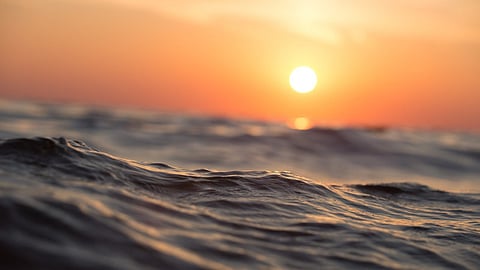

The European Commission (EC) recently published its proposal to set catch limits, or total allowable catches (TACs), for ten fish stocks in the EU waters in the Atlantic Ocean, Kattegat, and Skagerrak for 2025.
The EC said the proposal is based on scientific advice and covers fish stocks managed solely by the EU in those sea basins.
Following the available scientific advice from the International Council for the Exploration of the Sea (ICES), the commission is proposing catch limits for eight stocks, in line with the objective of maximum sustainable yield (MSY), i.e. the maximum amount of fish that fishers can take out of the sea without compromising the regeneration and future productivity of the stock.
For one stock, the commission is proposing a by-catch TAC above MSY to allow mixed fisheries to continue. The number of TACs proposed for 2025 is lower than last year, due to last year's introduction of multiannual TACs. For certain stocks, TACs for 2025 were already set by member states at the end of 2023.
The commission proposes an increase in catch limits for five stocks: anglerfish, megrims and horse mackerel in Atlantic Iberian waters, Norway lobster in the southern Bay of Biscay and Cantabrian Sea, and common sole in the Bay of Biscay.
For hake in Atlantic Iberian waters, the commission proposes to maintain the 2024 TAC – 17,445 tonnes – which is between the MSY point value – 15,105 tonnes – and the upper limit of the MSY range – 20,404 tonnes – provided by ICES. Hake is the most limiting species in mixed fisheries, as other species are often caught incidentally together with hake. With this proposal, the commission aims to strike the right balance between protecting hake in the long term and allowing fishers to catch it.
For plaice in the Kattegat, the commission also proposes to maintain the 2024 TAC, which falls below the lower limit of the MSY range provided by ICES. Plaice and cod are incidentally caught in fisheries targeting Norway lobster. In light of the zero-catch advice for cod, catch limits for Norway lobster and for plaice should remain low to avoid increasing by-catch pressure on cod.
For sole in the Skagerrak-Kattegat and the Western Baltic Sea, considering the low biomass of the stock, the commission proposes suspending the targeted fishery and setting a by-catch TAC for fisheries targeting Norway lobster at the level of recent catches. ICES forecasts that this by-catch TAC will keep the stock's biomass stable, although it will not allow reaching MSY.
Based on the precautionary approach, ICES advises zero catches in 2025 and 2026 for roundnose grenadier in the Skagerrak-Kattegat. The commission proposes setting a low multiannual by-catch TAC for 2025 and 2026 for roundnose grenadier for fisheries targeting Northern prawn at the level of recent landings.
Given the critical status of the European eel population, the commission proposes to maintain the existing measures for protecting the stock.
These include a mandatory six-month fishing closure and a prohibition for all recreational eel fishing in EU marine and brackish waters of the North-East Atlantic.
This proposal will be updated after the conclusion of the ongoing consultations with Norway and the United Kingdom, and to take account of the upcoming decisions to be taken in various regional fisheries management organisations.
Twelve stocks, managed solely by the EU, are still awaiting scientific advice:
Anchovy in the Bay of Biscay and in Atlantic Iberian waters;
Cod in the Kattegat;
Norway lobster in the Skagerrak-Kattegat, in the Bay of Biscay and in Atlantic Iberian waters;
Pollack in the Bay of Biscay, in the Cantabrian Sea and in Atlantic Iberian waters;
Red seabream in Atlantic Iberian waters;
Undulate ray in the Bay of Biscay and in Atlantic Iberian waters
The EU Council will discuss the commission's proposal on December 9 and 10 and establish fishing opportunities for 2025, and in some cases for 2026. The regulation should apply as of January 1, 2025.
